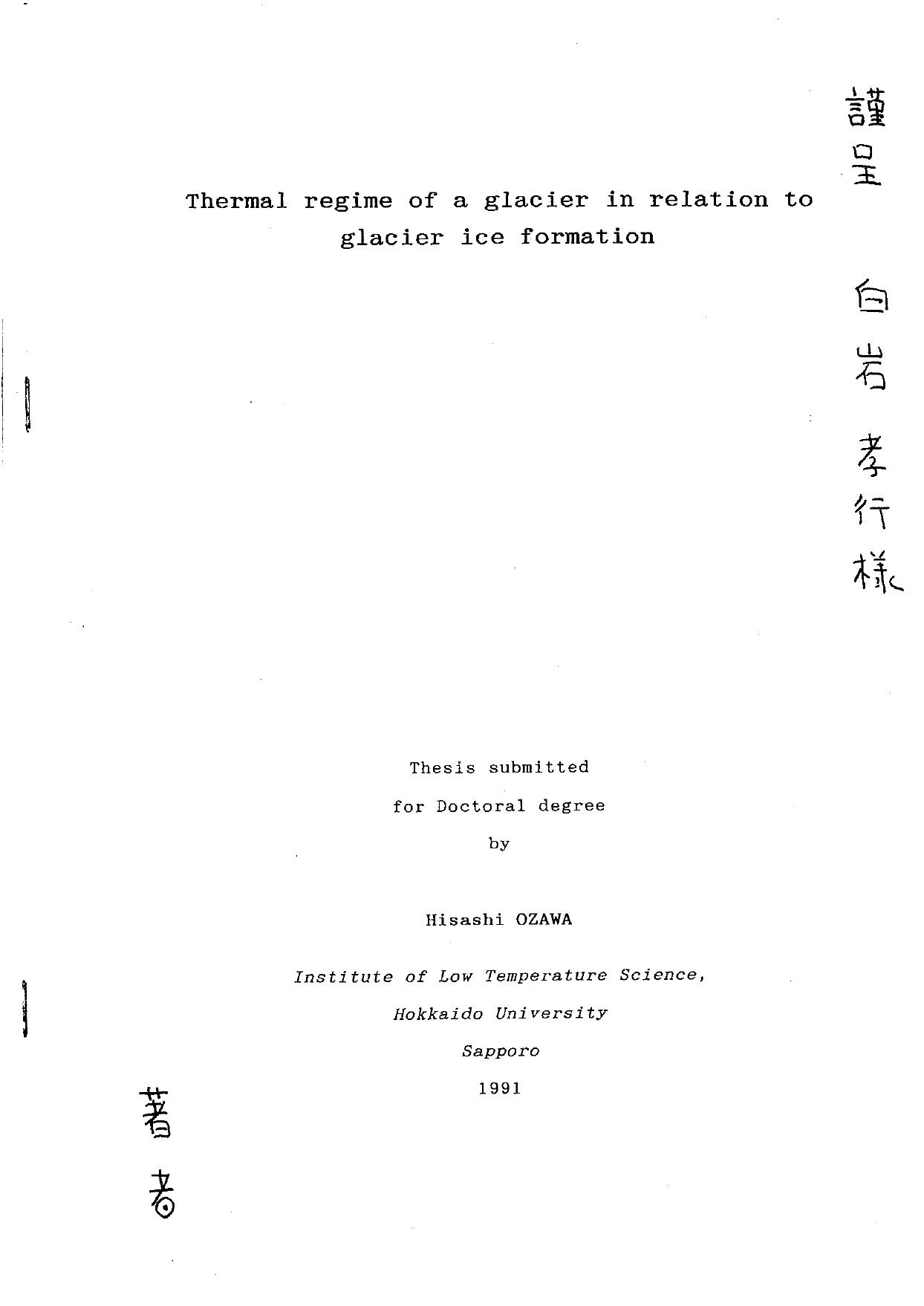
In order to investigate thermal regime and stratigraphic conditions of a glacier, field observations were carried out on the Yala Glacier in the Nepal Himalaya. The results show that upper part of this glacier is temporal (temperature is at the melting point) throughout while it’s lower part is cold (below the neltin8 point) and frozen to the bed rock. We call this glacier the inversion type glacier against the previous categories such as temperate and sub-polar. To clarify the cause of occurrence of the inversion type glacier, we investigate percolation process of meltwater into surface firn layer and formation process of the super imposed ice due to refreezing of this water. The results, obtained from this case study, are generalized for glaciers in the world, and a method is presented to classify glaciers into one of three typical types: temperate, cold and inversion types. The findings are summarized as follows:
(1) The inversion type glaciers, which are in disagreement with previous classification such as temperate or sub-polar glaciers, are widely distributed in the world.
(2) The inversion type glacier has a temperate firn area (the temperate infiltration zone) where the firn temperature is at the melting point throughout in the upper part, and has a cold ice area (the superimposed-ice zone and the cold ablation zone) where the ice temperature is negative in the lower part.
(3) The inversion type glacier can be found in the regions where winter is cold (the freezing index exceeds 2000"C day) and annual precipitation is more than 700 (mmH2O).
(4) The temperate type glacier can be found 1n the regions where freezing index is less than 2000 ("C day), while the cold type glacier can be found in the area where freezing index exceeds 2000 (oC day) and annual precipitation is less than 700 (mmH2O).
(5) The inversion type glacier is in a potentially unstable condition, because the upper mobile temperate ice is dammed up by the lower cold ice frozen to the bed rock. This in-stability can produce a rapid advance of the glacier, i.e., the glacier surge.